

1713 22 26 The Need For Speed - John Tschohl, Service Quality Institute Virtual Events Feeling Stale? - Sam Kolbert-Hyle, Brandlive Digital Marketing: Why Outsourcing Is Gaining Prominence - Ellie Hearn, Aira What Are The Best Social Media Channels For Customer Service? - Shep Hyken, Customer Service Expert OCTOBER 2022 • Vol.21 • No.10 WHY IT’S BECOMING MORE DIFFICULT TO BREAK THROUGH THE NOISE ON SOCIAL MEDIA - Luke Lintz, Founder and CEO, HighKey Enterprises LLC (ISSN 2564-2057)
On the Cover
09 Redefining Call Centers With Conversational Intelligence
Poor onboarding programs leave potential value on the table

- Carthey Van Dyke, VP, Client Services, Gryphon.ai
15 4 Ways To Use Your Customers As Your Recruiters

Help your customers help you fill your open
- Matt Parkin, Business Development
Why It’s Becoming More Difficult To Break Through The Noise On Social Media
How small businesses can still stand out while building a following for their brand - Luke Lintz, Founder and CEO, HighKey Enterprises
20 How Successful Strategies Win: Strategy Activation Process
Principles to activate strategic change
- Brad Haudan, President and Don MacLean, Partner, Consulting Customer, Root Inc.
24 Can You Let Go?
Don’t let situations or people hook you or drag you down - Dr. Ken Keis, President and CEO, Consulting Resource Group International, Inc.
28 Quiet Quitting: A Wake-Up Call For Better Management
How to recognize and combat quiet quitting - Sathya Smith, Founder and CEO, Piper
Articles
roles
Lead, FindWRK
LLC 07
INDEX HCM Sales, Marketing & Alliance Excellence OCTOBER 2022 Vol.21 No.10 ( ISSN 2564-2057)
The Need For Speed
Speed cannot exist without empowerment
- John Tschohl, Founder and President, Service Quality Institute
17
Virtual Events Feeling Stale?

Ideas for a memorable and engaging experience
- Sam Kolbert-Hyle, CEO & President, Brandlive
INDEX
Digital Marketing: Why Outsourcing Is Gaining Prominence


Highlights from Verblio’s annual survey
- Ellie Hearn, Digital PR Consultant, Aira
26
What Are The Best Social Media Channels For Customer Service?
It is the ones your customers are using
- Shep Hyken, Customer Service Expert, Keynote Speaker
Top Picks 13
22
HR.com makes HR Professionals smarter and we are sure your solutions do as well.
That being said, we understand how hard it is to market in the Human Capital space, get the attention of your target audience and show HR departments that you are a valuable resource. So, how do you overcome this hurdle?
Easy. Work with HR.com.
With over 19 years experience working with HR solution providers, we give over 1,200,000 HR professionals access to the tools and resources they need to succeed. We work side-by-side with HR solution providers to help them generate sales leads, grow market share, build brand awareness and promote industry expertise.
Checkout our growing list of tools and resources our vendors can take advantage of to get noticed by HR professionals!
HR Marketing Institute
The HR Marketing Institute (HRMI) is the ONLY community of Marketing Professionals in the Human Capital space dedicated exclusively to the issues and needs of the marketing professionals and their businesses. This is a community of Marketing professionals who dedicate their time to marketing in the Human Capital space and who support each other to make the right decisions so that your marketing initiatives deliver the impact you need to succeed. Membership includes networking with peers, face to face summits, webcasts, research and benchmarking tools.
Webcasts and Virtual Events
Thought Leadership, Lead Generation and Educational Content
HR.com’s Webcasts and Virtual Events are more than an exercise in brand awareness. They are a comprehensive and groundbreaking way of generating tangible sales leads, while showcasing you as an industry authority to a captive audience of clients, prospects and the entire HR.com global community, giving you a greater market reach. In addition, HR.com’s one-hour webcasts provide valuable education and certification credits for today’s forward-thinking HR professionals.
Research
Build your brand, content marketing strategies, and thought leadership with exclusive HR.com research. Choose between custom featured research or state-of-the-industry research sponsorship. With custom featured research, we work with you to develop research on the topic of your choice or align your brand with any of this year’s State of the Industry hot topics to highlight the latest HR trends. No matter which research strategy you choose, come away with your very own branded research report and infographic, establish yourself as an industry thought leader by presenting a webcast, get key insights from the opinions of highly qualified HR professionals, and maximize your ROI, and build a healthy sales funnel with over 1,000 qualified leads.
Managed Email Campaigns
Looking to expand your marketing reach? Build long-term customer loyalty? Generate high response rates? Drive website traffic? The value of HR.com’s opt-in direct email program allows you to do just that. Nurture potential buyers on a consistent basis through our managed campaign program. Deliver your message directly to HR decision makers’ inboxes. HR.com’s direct email lists are 100% optin, GDPR, CASL, and CAN-SPAM compliant and contain only the most exclusive names and companies in the human capital industry.
Online Advertising
Onsite advertising is a great way to reinforce brand and profile new products associated with a product launch. HR.com offers a variety of online advertising solutions including banner ads and premier homepage positioning making it a cost-efficient option for maximum brand exposure.
Buyer’s Guide
Be the Answer to the Questions HR Decision Makers are Asking

The HR.com’s Buyer’s Guide is where HR departments from around the world turn first when they need products and services. Put your company at the top of their list and get listed with the resource that HR professionals and decision makers trust.
Excellence Publications
Interactive Targeted Learning ePublications Aimed at Reaching Your Core Audience
HR.com’s 12 targeted and focused monthly online publications provide an invaluable collection of high-quality HR content and experts’ solutions to our members. Ten of our publications now feature themed editions that focus on specific topics. Sponsorship of research reports and webcasts aligned with the themes are also available.
For more information phone: 1.877.472.6648 | email: sales@hr.com | www.HR.com
Exclusive
HR.com research
Attn: HR Solution Providers! Our solutions will get you more clients, brand exposure, sales –and a marketing community too!
Editorial Purpose
Debbie Mcgrath Publisher, HR.com
Building Brand in the Social Era
EDITOR’S NOTE
Deepa Damodaran Editor, HCM Sales, Marketing & Alliance Excellence


Excellence Publications
Debbie
Dawn
Sue
Submissions
Once upon a time, building a brand was so simple it was almost formulaic. All companies had to do then was pepper all marketing channels with their ads, so users were forced to keep their brands at the top of their heads. Even with social algorithms filtering what people saw on their social media feeds, it was all a numbers game. Whoever had enough money to scrape for pay-per-click ads took over people’s consciousness and buying decisions. However, that was before social media users became hyper-aware of how algorithms work.
HighKey Enterprises’ Luke Lintz, in his article, discusses Why It’s Becoming More Difficult To Break Through The Noise On Social Media, and shares how enterpsies can still build brand in the social era.
Never has speed been more important to your customers— and to people in general—than it is today. Technology has fueled the frenzy, putting access to information and people at
our fingertips and doing so at speeds that continue to increase. Customer service expert John Tschohl, in his article, The Need For Speed, tell us why and how organizations must make speed a priority for the success of their business.
FindWRK’s Matt Parkin shares the 4 ways companies can use their customers as recruiters to find quality talent. Learn how to make virtual events memorable in Brandlive’s Sam Kolbert-Hyle’s Virtual Events Feeling Stale?
That is not all! We hope this edition of HCM Sales, Marketing & Alliance Excellence, will help you achieve excellence in your sales and marketing efforts.
Happy Reading!
expressed in the Excellence ePublications are solely
and do not necessarily represent those of HR.com and its employees. Under no circumstances shall HR.com or its partners or affiliates be responsible or liable for any
or incidental damages arising out of these opinions and content.
Disclaimer: The views, information, or opinions
those of the authors
indirect
Subscribe now for $99 / year And get this magazine delivered to your inbox every month Become a Member Today to get it FREE! SIGN UP OR For Advertising Opportunities, email: sales@hr.com Copyright © 2022 HR.com. No part of this publication may be reproduced or transmitted in any form without written permission from the publisher. Quotations must be credited.
Our mission is to promote personal and professional development based on constructive values, sound ethics, and timeless principles.
McGrath CEO, HR.com - Publisher
Jeffers VP, Sales
Kelley Director (Product, Marketing, and Research) Babitha Balakrishnan and Deepa Damodaran Excellence Publications Managers and Editors Deepak S Senior - Design and Layout HCM Sales, Marketing & Alliance Excellence Team Deepa Damodaran Editor Nataraj Ramesh Design and Layout (Digital Magazine) Vibha Kini Magazine (Online Version)
& Correspondence Please send any correspondence, articles, letters to the editor, and requests to reprint, republish, or excerpt articles to ePubEditors@hr.com For customer service, or information on products and services, call 1-877-472-6648 HCM Sales, Marketing & Alliance Excellence (ISSN 2564-2057) is published monthly by HR.com Limited, 56 Malone Road, Jacksons Point, Ontario L0E 1L0 Internet Address: www.hr.com Write to the Editor at ePubEditors@hr.com
In a world of unparalleled challenges (global pandemic, racial injustice, political rivalry, digital 4.0, emotional malaise), uncertainty reigns. Finding opportunity in this context requires harnessing uncertainty and harnessing starts with reliable, valid, timely, and useful information. The Excellence publications are a superb source of such information. The authors provide insights with impact that will guide thought and action.
Dave Ulrich
Rensis Likert Professor, Ross School of Business, University of Michigan Partner, The RBL Group

Excellence publications are my ‘go-to’ resource for contemporary and actionable information to improve leadership, engagement, results, and retention. Each edition offers rich and diverse perspectives for improving the employee experience and the workplace in general.
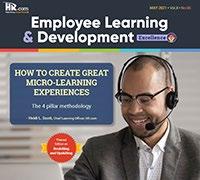
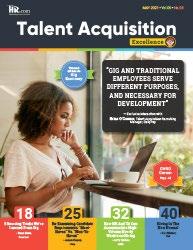
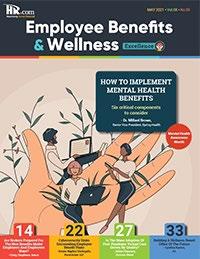




Julie Winkle Giulioni
Author, Virtual /Live Keynote Presenter, Inc.’s Top 100 Leadership Speakers
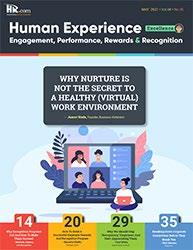
I regularly read and contribute to Leadership Excellence and Talent Management Excellence. I use many of the articles I read to augment my own presentations and I often share the articles with my clients. They are always quick, right on target for the latest issues in my field, and appreciated by my clients. If you want to stay up to date on the latest HR trends, choose a few of the different issues from the Excellence series of publications.


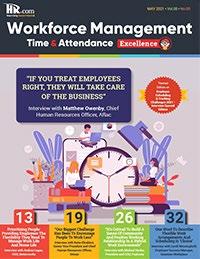

 Dr. Beverly Kaye CEO, BevKaye&Co.
Dr. Beverly Kaye CEO, BevKaye&Co.


We’re eager to hear your feedback on our magazines. Let us know your thoughts at ePubEditors@hr.com WHY EXCELLENCE PUBLICATIONS?
Why It’s Becoming More Difficult To Break Through The Noise On Social Media
By Luke Lintz, HighKey Enterprises LLC
Once upon a time, building a brand was so simple it was almost formulaic.
All companies had to do then was pepper all marketing channels with their ads, so users were forced to keep their brands at the top of their heads. Even with social algorithms filtering what people saw on their social media feeds, it was all a numbers game. Whoever had enough money to scrape for pay-per-click ads took over people’s consciousness and buying decisions.
But that was before social media users became hyper-aware of how algorithms work.
Now, it’s becoming harder and harder to break through the noise on social media because that hyper-awareness comes with people becoming more discriminating about the brands they encounter on social media. The main challenge for brands now is to get their message across without getting ignored, or worse, getting marked as spam or manually hidden from view with any iteration of the “I don’t want to see this” feature on social media.
Today’s shining characteristic of social media is that the audience is in the driver’s seat. And unless brands find new, imaginative ways to appeal to their
target market, building a following can be next to impossible.
Platform-based Challenges
On top of users becoming stricter and stricter about the kinds of messages they allow into their stream of consciousness, there’s also the issue of social media platforms shifting their features and algorithms by the day.
For instance, you’ve got Instagram having an identity crisis. Bothered by the meteoric success of TikTok, Instagram is changing so much in a feeble attempt at stealing the spotlight back.
For one, it doesn’t take someone who’s chronically online to notice that Instagram now heavily incentivizes video-heavy content like Stories, Reels, and IGTV posts. This pivot from their claim to fame as the first successful photo-sharing SNS has been confusing, even for the platform’s heaviest users.
After all, everyone knows it’s terrible when social media socialites like Kylie Jenner start to get frustrated. First, she came for Snapchat. A simple tweet into the void, asking, “So, does anyone else not open Snapchat anymore?” caused the company’s stock to tank.
How small businesses can still stand out while building a following for their brand
Submit Your ArticlesHCM Sales, Marketing & Alliance Excellence presented by HR.com OCTOBER 2022 7 COVER ARTICLE
Now, she’s coming for Instagram.
“Make Instagram Instagram again,” says Jenner. “Stop trying to be TikTok. I just want to see cute photos of my friends.”
However, the most significant blow of Instagram’s shift of focus did not land on the likes of Jenner. It landed right on the backs of marketers, who have just spent a considerable amount of time and resources mastering the craft of advertising on Instagram as we knew it.
And it’s not just Instagram. Elsewhere, Facebook is having an identity crisis of its own, with the revival of the “chronological feed” and a brand-new “home” tab that is not just blatantly algorithmic but also highly reminiscent of Tiktok’s For You Page.
At any rate, social media platforms are continuously changing the way their feeds and features work, making it more and more difficult for brands to catch up with creative advertising that sticks and delivers.

Coming Up with Creative Solutions
Despite the challenges above, all hope is not lost for anyone looking to build a brand on social media.
Though becoming fewer and farther between, there are still ways for brands to stand out while building a following on social media.
Social media platforms can shift their gears as often as they want. And users can do all the curating they wish to control what they see on their feeds. But one thing remains constant: people’s need for value. And as long as brands can provide that for their target audience—through creative means—they can increase their following.
With that said, I always advise small businesses to work with digital marketing agencies rather than hiring an in-house team to manage their social media platforms. It can be incredibly time-consuming to master each forum, study each trend before it becomes mainstream, and come up with social media campaigns that actually work.
On top of this, platforms are constantly changing their own rules and social media users are getting better at handpicking the content they want to see. But the industry’s most creative minds are fighting back. And that’s what gives small businesses a fighting chance to get noticed, to get heard, and to achieve the success they’re looking for.
Luke Lintz is the founder and CEO of HighKey Enterprises LLC. Through HighKey Clout’s celebrity giveaways, he triggers social growth for some of the most influential figures on social media. Meanwhile, he helps create elite brands with video, design, and press publications through HighKey Agency.
Would you like to comment?

Why It’s Becoming More Difficult To Break Through The Noise On Social Media
Submit Your ArticlesHCM Sales, Marketing & Alliance Excellence presented by HR.com OCTOBER 2022 8
Redefining Call Centers With Conversation Intelligence
Poor onboarding programs leave potential value on the table
By Carthey Van Dyke, Gryphon.ai
Call center attrition rate typically hovers between 30% and 45%, close to double the national average for employee turnover. But why is it so difficult for call centers to retain workers?
A combination of insufficient onboarding programs, poor workplace morale and a lack of career-development opportunities all cause call center employees to
look elsewhere — and leave HR scrambling to find replacements. Not only does sourcing talent take up HR’s time, but also strains finances, with the average cost of replacing an employee anywhere between $5,000 and $7,500
Fortunately, exorbitant turnover is not a given — it is possible to stem the exodus of talent from call centers. When applied
strategically, conversation intelligence tools make the onboarding process smoother for new call center employees and set them up for success early by supporting them in real time. In turn, call center leaders can move their focus to improving workplace culture and reducing turnover among existing employees.

Submit Your ArticlesHCM Sales, Marketing & Alliance Excellence presented by HR.com OCTOBER 2022 9
Poor Onboarding Programs Leave Potential Value on the Table
Time to value (TTV) is an important metric for measuring onboarding success. In a call center context, TTV measures how quickly reps adjust to their roles and close their first deals. Call centers with high TTV are at risk for higher levels of turnover. That is because the longer it takes new employees to succeed, the less likely they are to remain in the business long term.
Part of the problem is that the learning curve to become an effective sales rep is a lot longer than most call centers have time for. After an initial one-totwo-week onboarding program, where they learn the basics of capturing prospect attention,
many new reps are set loose to put these concepts into practice by themselves.
At this point, they realize that sales calls are not as simple as memorizing a script. Reps have to know their organization’s products and services inside and out, handle customer objections and communicate with empathy — all in real time. So, it takes time to become proficient, which is where the role of the manager becomes vital. Yet, many managers do not have enough bandwidth to guide employees through the learning process. And during calls, new employees are completely on their own.
Not only does this steep learning curve leave potential value on the table, it also opens call centers up
to potential compliance issues. Mistakes like recording a call without consent or contacting someone on a Do Not Call registry can cost call centers thousands of dollars in fines. If your organization’s onboarding program is inadequate, new employees are more likely to make a costly mistake by saying the wrong thing on a call.
3 Ways Conversation Intelligence Can Help Your Call Center
High turnover rates indicate that many employees don’t view the call center as a sustainable career option. The silver lining is that your call center has an opportunity to differentiate itself by investing in technology that makes long-term growth possible.

Redefining Call Centers With Conversation Intelligence Submit Your ArticlesHCM Sales, Marketing & Alliance Excellence presented by HR.com OCTOBER 2022 10
There are several ways conversation intelligence can help your call center recruit and retain new talent:
1. Real-time coaching and post-call analysis Conversation intelligence monitors conversations in real time and offers relevant guidance on how reps should proceed. So, new reps no longer have to memorize every script and product detail before their first call.
For example, if a customer tells the sales rep they’re considering switching to a competitor, the technology pulls up information about the areas where your product excels. Or if the customer is using angry or emotional language, the algorithm can offer guidance on how to calm things down. As the technology encounters more situations, its guidance only becomes more personalized.
From a coaching perspective, managers also gain greater visibility into their employees’ progress. Instead of having to listen to dozens of recordings, conversation intelligence tools highlight key moments in the call that a manager can build on. Previously, managers struggled to give new reps the attention they needed to succeed. Now, an effective strategy one rep employs becomes available to other team members the same day.
2. Improved compliance Conversation intelligence ensures
inexperienced employees under stand what they can and can’t say during a call, which is easier said than done. Rules for compliance vary by industry — for example, if a healthcare call center rep mentions a product, they also need to ensure that they highlight any disclosures associated with that product. With conversation intelligence, reps have access to relevant regulations in the moment and can avoid costly mistakes.
As you attract new business, compliance becomes even more important. You may have to conduct compliance audits annually, quarterly, or even monthly depending on your risk level. During an audit, AI-powered transcription can lighten the load off your legal team by enabling them to refer back to specific moments during calls and confirm that a rep met their specific compliance requirements.
3. A more supportive, engaged company culture Many call centers carry the stigma of being toxic places to work — people often associate them with high levels of stress, isolation, and frustration. But it doesn’t have to be this way. Team leads can’t support team members when they’re struggling to close deals themselves.
Conversation intelligence can help alleviate much of the stress and frustration that comes with call center work and subvert the stereotype of the job.
Call center leaders can accomplish this by celebrating the wins that conversation intelligence enables. Whether you work remotely or in-person, sales teams thrive on real-world success. For example, the achievement of weekly sales goals is a major morale booster that improves camaraderie across the team. When new sales reps see their first successes, they’ll feel like a part of the team much faster. And when they have early growing pains, other reps on the team can better support them.
Conversation intelligence doesn’t just make sales reps’ jobs easier. It enables your organization to redefine the role call centers play in today’s labor market. Job-seekers can now view your call center as a viable step in their career development and not as a temporary gig opportunity. Ultimately, conversation intelligence streamlines rocky onboarding programs and gets new sales reps driving value for your organization faster than before.
Carthey Van Dyke is VP of Client Services at Gryphon.ai. Would you like to comment?

Redefining Call Centers With Conversation Intelligence Submit Your ArticlesHCM Sales, Marketing & Alliance Excellence presented by HR.com OCTOBER 2022 11
us know
the
CALLING ALL HR MARKETING GURUS - SHARE YOUR EXPERTISE WITH OTHERS!
Marketing
Human Capital space?
inclusion
Alliance
Sales and Marketing
Capital
can share
out our magazine here
marketing
you’d
interested to feature your article in our magazine
can also review our submission
if you are in marketing in the human capital space, we invite you to host a webcast
Marketing Institute. For more details, please email Shelley

● Marketing hacks for HR Solution Providers ● Building relationships with current and potential clients ● Tradeshow expo halls - best practices for ROI ● Branding and your online presence ● Aligning Marketing roles with your business growth strategy ● Marketing Tactics to increase ROI ● Martech Enablement ● Marketing Analytics ● How to define a “real lead” and how to count its sale value ● How to nurture stronger partnerships between marketing and sales ● Tips for working with influencers and analysts ● Market planning process ● How to build a brand ● How to win with PR ● How to use Social to drive brand recognition and sales ● Your approach to producing and disseminating meaningful thought leadership ● How marketing needs to evolve for success Our readers are interested in a number of topics including: Are you an expert in
in the
If yes, you’re invited to submit articles for
in our publication, HCM Sales, Marketing &
Excellence! This publication helps
professionals in the Human
space learn emerging trends to help them in their business and now you
your
expertise with them! Check
Kindly let
if
be
by emailing
editor at ddamodaran@hr.com. You
guidelines by clicking here Also,
for our HR
Marsland-Beard at smarsland@hr.com Article submission deadline: 1st of each month1
.
The Need For Speed
Speed cannot exist without empowerment
By John Tschohl, Service Quality Institute
Never has speed been more important to your customers—and to people in general—than it is today. Technology has fueled the frenzy, putting access to information and people at our fingertips and doing so at speeds that continue to increase.
In a nutshell: We want what we want—and we want it now! We have no patience with processes—both internal and external—that move slowly. If you want your business to thrive, it is critical that you focus on speed. That means making speed a priority in every aspect of your business and removing obstacles that make speed impossible.
The first step is to analyze your policies and procedures. In most companies, they are put in place to prevent customers from taking advantage of the company and to ensure that employees operate in a controlled environment.
The downside, however, is that, all too often, those policies and procedures are roadblocks to speed. They discourage employees from making quick decisions, requiring them instead to follow a lengthy—and often confusing—route to completing tasks or solving problems.
Top Pick Submit Your ArticlesHCM Sales, Marketing & Alliance Excellence presented by HR.com OCTOBER 2022 13
Lack of empowerment is another roadblock to speed that must be eliminated. Most employees will not make empowered decisions because they fear being reprimanded or fired if management disagrees with their actions. Speed cannot exist without empowerment, which allows for quick decisions based on knowledge and expertise. Empowered employees benefit customers, coworkers, and the company.
The third roadblock to speed is procrastination. Let us face it; many of us tend to wait until the last minute to tackle a project. If a report is due in a week, most employees will wait until the day before the deadline to start working on it. Instill in your employees the need to do things quickly. And, when they do, praise them.
Some companies, including FedEx, are successful because the folks there recognize—and cater to—pro crastinators. Many people wait until the last minute to send things, so they head to FedEx, which is only too happy to help them and take their money as they do so. That is fine for FedEx, but you do not want procrastinators on your payroll.
External barriers to speed are also a problem. If you are doing business with outside vendors who do not have the same commitment to speed that you have, fire them! Look for vendors, who share your mindset and approach to speed, to keep things rolling and on schedule. If your customers place an order with you
but the shipping from the vendor exceeds what you expect, speed and customer satisfaction both take a hit.
It is imperative that you—as an owner, executive, or manager of a company—make speed a priority in every aspect of your business. If you want to see how speed increases sales, you need only look at Amazon. When you place an order, you receive confirmation within a few seconds. When your purchase ships, Amazon notifies you and gives you an estimated date of delivery. Finally, within a minute or two of your products being delivered to you, Amazon sends you an alert.
Speed requires a special mindset, and a willingness to actively look for opportunities to use speed every day and in every task and project you encounter. A speed mindset takes practice and perseverance. It must be encouraged and supported.
Of course, it is critical that you do not sacrifice accuracy when pursuing speed. Speed without accuracy is counterproductive. Inaccuracies not only diminish quality, they also slow you down because you then have to make time to fix those errors.
Make speed a priority, and you will reap great rewards. Encourage speed, support it, and praise employees who practice it.
John Tschohl is the Founder and President of the Service Quality Institute. He is considered one of the world’s foremost authorities on all aspects of customer service and has developed 17 customer service training programs, including Speed, that are used by companies throughout the world. Would you like to comment?

The Need For Speed
Submit Your ArticlesHCM Sales, Marketing & Alliance Excellence presented by HR.com OCTOBER 2022 14
4 Ways To Use Your Customers As Your Recruiters
Help your customers help you fill your open roles
By Matt Parkin, FindWRK
For some, talent acquisition is only one aspect of their role. For others, it consumes their entire day. Regardless of how much time you spend, it’s

likely you share the sentiment of wanting to fill your vacant roles faster. With time and budget constraints, it can be challenging to tap into enough talent pools to
source candidates from. You may not have an entire department of recruiters, but you do have something even better - your customers.
Submit Your ArticlesHCM Sales, Marketing & Alliance Excellence presented by HR.com OCTOBER 2022 15
Use Your Customers As Your Recruiters
While customers can be great advocates for others to do business with you, they can be equally as helpful at driving candidates to your open positions. Here are four ways you can use your customers as your recruiters.
Business Cards
I was at a restaurant recently where the manager came to every table, handed out a business card, and encouraged the guest to contact them if they needed anything. When I flipped over the business card, there was an advertisement for open positions at the restaurant. Not only did this come across as an excellent customer service piece that I’d never seen before, but it also acted as a great way to get the word out about open positions.
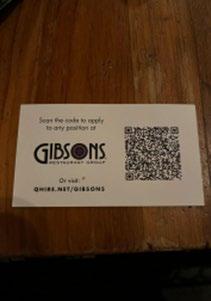
and encourage them to apply. This can be easily applied across industries to other businesses. Think about your customer journey - where can you include a business card?
Products
I visited a McDonald’s in Chicago who added hiring information to the sides of their cups. This meant that the hundreds or thousands of people ordering drinks that day would see they were hiring. People often take pictures of their food or drink and post it on social media, so this can amplify your reach if your customers are promoting your business and your open roles simultaneously. This strategy can also apply to product packaging in warehouses or retail stores.

out a survey can be tedious, but sending a picture of the open roles to an unemployed friend is much less time consuming.
Bags
When a customer leaves a restaurant with takeout or a store with a purchase, they’re often given a bag or box from the business. Printing stickers and adding them to the bag or box is a great way to show the customer and those who interact with the customer that you’re hiring without needing to redesign the bag or box itself.
In a tight labour market, online job postings and signs in the window aren’t going to cut it. Companies who actively look for new talent pools to tap into will get ahead of their competitors and reduce the need to scale back operating hours due to staffing shortages. While leveraging your customers as your recruiters may not fully fill your open roles, it will hopefully prove to be a nice boost to supplement your other talent acquisition strategies.
If a customer is looking for work or knows someone who is, it makes it very easy for them to send a picture of the business card or hand the card to someone
Receipts
Companies often include prompts at the bottom of their store receipts to fill out surveys. Try replacing or supplementing that messaging with information about your open positions. Filling
Matt Parkin is the Business Development Lead at FindWRK.
Would you like to comment?

4 Ways To
Submit Your ArticlesHCM Sales, Marketing & Alliance Excellence presented by HR.com OCTOBER 2022 16
Virtual Events Feeling Stale?
Ideas for a memorable and engaging experience
By Sam Kolbert-Hyle, Brandlive
There’s no denying that work has changed significantly in the past few years, and one of the most glaring changes is in the way we communicate with each other. Today, executives lead from their screens, which means they need to adopt new ways of effectively engaging, inspiring, and informing remote audiences.
Many companies still communicate with the same old format (e.g. PowerPoint), and employees are in more meetings than ever, now spending up to 1/3 of their workweek in virtual meetings. There’s nothing less inspiring than a 24-page PowerPoint deck at the end of a long day.

Top Pick Submit Your ArticlesHCM Sales, Marketing & Alliance Excellence presented by HR.com OCTOBER 2022 17
Plus, your company’s communications are in competition for your employees’ attention. We’re all multi-tasking in our all-hands meetings (because Slack, TikTok and LinkedIn are just a click away). Competition for attention has never been more fierce.

Forward-thinking companies are ditching the slide show and investing in communication methods that are more engaging, and that define and strengthen corporate culture. Often, these communications look more like the content we consume in our personal lives — Netflix, TikTok or Instagram —because they’re entertaining and bingeable.
Taking cues from this model, employers like Nike, Nintendo, Poshmark and Amazon are partnering with media platforms to curate virtual experiences that wow, delight and amaze.
Here are some top tips and learnings about curating the most engaging content:
Keep it Simple
Clarify your two or three biggest goals for the event or meeting. Is your audience internal or external? What message do you want the audience to leave with? How do you want them to feel? Maybe you are informing your employees about a new business direction, a change in leadership, or a new product launch, or maybe your purpose is to virtually recruit employment candidates or show your commitment
to a diverse and inclusive environment. Whether your audience is internal or external, your message should be clear and to the point.
Recently, Brandlive hosted an internal all-hands meeting for Nintendo, a virtual recruiting event for Amazon, and a DEI for Nike. Each event had a different audience (internal versus external), and a different purpose (internal product launch, recruiting new candidates, and relaying a commitment to diversity equity and inclusion).
Nintendo’s purpose was to excite its employees about a new product launch. To that end, the company made the internal event exciting and fun by pitting executive team members against each other in a gaming battle.
Amazon’s purpose was to inform candidates about Amazon opportunities and to brand Amazon as an employer of choice. For Nike, its purpose was to communicate its commitment to a large, external audience through athlete interviews and positive stories. Each company planned their event content around the central message and purpose.
Chunk it Up
When you plan your event, think in segments, just as you would see on a late-night talk show. Every 5-10 minutes, introduce a new segment that carries its own vibe but still fits with your theme. This keeps people engaged with your content.
If your team is planning an internal all-hands meeting, think of each topic as a segment. Your CFO may present the financial numbers segment, you may introduce your new hires to the rest of the company by having those new hires participate in a game, and your CEO may present an uplifting message. Each of these segments can be made to be entertaining and visually interesting, as well as informative.
Pay attention to the flow of your segments to keep it lively. For example, you may follow an intro video with a panel discussion, then move to a team activity in breakout rooms, and come back together to debrief on those sessions. Consider using an emcee to tie all the segments together.
Virtual Events Feeling Stale?
Submit Your ArticlesHCM Sales, Marketing & Alliance Excellence presented by HR.com OCTOBER 2022 18
To help the content feel more cohesive, be sure to continue reinforcing your overarching theme —and use branded graphics and visuals for a consistent look and feel.
Leverage Visuals and Video
Think about the images and format that will engage your audience best. The first fifteen seconds of each segment are crucial to get people’s attention. But you’ll need to keep the energy high throughout your time together, so pace yourself and use all the available tools.
For example, consider how you might add video or animation to otherwise static content. How can you use color and white space to effectively get your message across? Do you have enough variety of media throughout the meeting? How can you use emojis to add fun and flair?
One meaningful tool that’s easy to implement is an online ticker. Whether your ticker shows the number of participants or even the number of comments you’ve received, a ticker can add visual interest to what’s happening on the screen and allow leaders to react to dynamic information during the course of the meeting.
Mix Pre-recorded and Live Segments

Mixed events, that include both live presentations and pre-recorded segments, can help each element of the meeting shine. Pre-recorded segments can add variety and dimension to the show and provide breaks for live presenters. Plus, they can be recorded on the executive’s schedule, which can ease the production process.
Live segments, on the other hand, can increase the energy of the meeting, provide a great opportunity for spontaneous connections and feedback, and inspire authenticity and vulnerability. By combining both pre-recorded and live segments, leaders can get the best of both worlds.
Talk Less, Listen More
For employees, the most memorable parts of large-group meetings are those in which they feel management is really listening to them.
Use the feedback tools available through your virtual platform to engage participants throughout the meeting. Get creative with trivia, polls, surveys or live chats. Anonymous polls and chat features are especially helpful when discussing sensitive topics, like those related to DEI.
And don’t forget to get feedback on the meeting itself. Before you close the meeting, ask your participants to fill out a quick survey about the format. Find out what they liked, and what they didn’t, so you can continuously upgrade your approach.
Create Meaningful Opportunities for Small Groups
Make sure your breakout time is productive. Ask teams to brainstorm to solve a specific problem or iterate on an idea. Then, when they rejoin the larger group, they can share highlights.
With the increase in hybrid and virtual working, employees are swamped with meetings. “That meeting should have been an email” is the last thing you want to hear. Leaders need to use all the tools at their disposal to amp up the volume of corporate meetings and add value to keep employees’ attention. This means leveraging technology to offer the highest possible production quality – with bite-sized, interactive, and creative content that inspires their people. To minimize multitasking, leaders must think in terms of authenticity and connection, rather than information dumps.
It’s time to move corporate meetings from boring to bingeworthy – and start creating “can’t miss” moments.
Sam Kolbert-Hyle is CEO & President of Brandlive.
Would you like to comment?
Virtual Events Feeling Stale? Submit Your ArticlesHCM Sales, Marketing & Alliance Excellence presented by HR.com OCTOBER 2022 19
How Successful Strategies Win: Strategy Activation Process
Principles to activate strategic change
By Brad Haudan and Don MacLean, Root Inc.
All organizations have business processes that govern their activities and behaviors, and today’s organizations are constantly trying to transform. But if you ask organizations for the process that guides the way they manage the organization through trans formational change to activate their new strategy, you may get blank stares.
Strategic change is a process, but it’s often managed as a series of independent events led by functions. It’s not the process itself but how it’s executed that leads to success or failure.
Principles to Activate Strategic Change
Organizations that win have some unwavering principles that guide the way they activate their strategies.
1) They drive collaboration, shared meaning, and shared ownership across functional boundaries while maintaining functional ownership and accountability Football players have a detailed playbook and practice plays countless times before they’re ever called in a game. They do this to make sure that every player understands how the play should be run and the type of adjustments they may need to make.
In business transformation, playbooks are often handed to functional leaders, and the next step is “game day” execution. Six to 12 months later, the
Sales group and the Marketing group don’t look like they are on the same team! It becomes painfully obvious that these functions never had shared meaning on the why, what, and how of the desired future state.

Submit Your ArticlesHCM Sales, Marketing & Alliance Excellence presented by HR.com OCTOBER 2022 20
Strategies Win: Strategy Activation Process

Winning organizations allocate “practice” time when functional leaders have rigorous debate and dialogue to form a clear and shared picture of the future. Then, when “audibles” are called during the transformation, they’re executed with a common mental model in mind.
2) They invest in capability building and coaching, where key leverage points exist to accelerate strategy activation, starting with the top leaders Change is difficult, and we often ask others to change before we are willing to change ourselves. Senior executives aren’t immune to this. They often chart a course for the company’s strategic future without considering how they need to adapt and grow. At the executive level, these capability shifts are often tied to observable behaviors. Because employees often model their leaders’ behaviors, leadership behaviors can serve either as an accelerant or delay the change effort.
3) They shatter traditional hierarchies and enroll a larger group of leaders as advocates in the strategy
In the early stages, strategy and transformational change are usually very confidential. Only the top senior leaders plan the change, while everyone else is informed on a need-to-know basis. This usually causes the transformation to crumble under its own weight because the only advocates are the few who drafted the strategy. It’s time to squash this thinking! Winning organizations enroll a broad group of leaders – your loyal fan base – in the game plan early, so they can accelerate the pace of change within the organization.
The Path to Victory Organizations that apply a process discipline and live by these principles greatly increase the odds of their transformation and strategy achieving its full intended potential (touchdown!).
Don MacLean is Partner, Consulting at Root Inc . He initiated and broadened Root’s international business presence, extending our global reach beyond North America. He also has led teams of dedicated industry experts to develop innovative custom learning solutions for financial institutions and in the energy and basic materials sector. Don has worked with CEOs and senior executives from numerous organizations domestically and inter nationally to create organization-wide business literacy and strategy activation.

Would you like to comment?
Brad Haudan is the President at Root Inc . Brad leads Root’s competency center, which focuses on large-scale change initiatives, and he also oversees Root’s account management team focused on client delivery and account growth. He helps C-suite executives align on and deploy their corporate strategy via a facilitated 8-step process and Root’s core competencies.
How Successful
Submit Your ArticlesHCM Sales, Marketing & Alliance Excellence presented by HR.com OCTOBER 2022 21
Digital Marketing: Why Outsourcing Is Gaining Prominence
 Highlights from Verblio’s annual survey
By Ellie Hearn, Aira
Highlights from Verblio’s annual survey
By Ellie Hearn, Aira
In its annual survey, Verblio studied how freelancers, agencies and in-house digital marketers are using the tools of their industry.
The survey revealed a number of interesting statistics, including 69% of in-house marketers and 75% of agencies are using freelancers, blog posts are the best content format for driving results and a quarter of agencies are receiving half of their income from content creation
Here are the highlights from the survey: Agency Responses Breakdown
1. The number of agencies, who are generating revenue by offering content to their clients, is not surprising, looking at last year’s survey, which revealed that 75% of surveyed agencies said they expect revenue from content to increase.
2. 21% of agencies said that content creation makes up more than ¾ of their revenue.
3. Looking more closely at those agencies, the majority (67%) have more than 10 employees.
4. When it comes to frequency of content creation, few agencies are producing over 15 pieces of content per client per month (16%) with 39% producing 1-4 pieces, and the majority (41%) producing 5-14 pieces.
5. The biggest blockers to agencies creating quality content are revealed to be industry/ audience knowledge (28%), managing client expectations (24%) and not enough resources (20%).
6. 75% of agencies are getting help from either freelancers or content marketplaces, with the majority of those (54%) working with freelancers exclusively.
7. When it comes to outsourcing, the main pain points for agencies were similar; getting content which is authentic and industry-specific (43%), and client satisfaction (29%).
Top Pick Submit Your ArticlesHCM Sales, Marketing & Alliance Excellence presented by HR.com OCTOBER 2022 22
In-house Team Responses Breakdown
1. On average, in-house marketers are producing more pieces of content per month than an agency would for a single client, with almost half (49%) producing 5-14 pieces.
2. Half of all in-house teams are outsourcing their content creation, proving that the hybrid content creation model is becoming increasingly normal.
3. In-house teams are more than twice as likely to use freelancers over content platforms or agencies, and 35% work exclusively with freelancers.
Looking at where content teams sit within their larger corporate structure, we can see that the majority (38%) are part of the growth team, 29% are seen as an in-house creative agency, and 17% sit with the brand team.
Pain points for in-house teams that outsource are similar to those felt by agencies, with 40% claiming the hardest part is getting content that is authentic and industry-specific.
In-house marketers and agencies reported they were finding it slightly harder to build successful content, with 71% in-house agreeing and 68% of agencies agreeing.
Ultimately, the survey revealed that it’s harder than ever to build great content, with most content marketers outsourcing at least some of their content needs. Content drives growth, so it’s important that digital marketers continue to invest and develop their skills.

Ellie Hearn is Digital PR Consultant at Aira. Would you like to comment?

Digital Marketing: Why Outsourcing Is Gaining Prominence
Submit Your ArticlesHCM Sales, Marketing & Alliance Excellence presented by HR.com OCTOBER 2022 23
Can You Let Go?
By Ken Keis, Ph.D., Consulting Resource Group International, Inc.
Are you able to let go of toxic, negative attitudes, events, or situations? Many people refuse to let go—no matter what.
Here’s an example. There was a time when a CRG associate complained to a team member about an incident that had occurred between this associate and CRG—15 years prior! It was the first we had heard of the incident, and not one person who currently worked at CRG was with the company at the time of the occurrence.
Regardless, we wanted to address the issue, and so exchanged numerous emails and had many conversations back and forth, attempting to resolve matters. However, the associate would not let go of her toxic thought and stated that she never wanted to talk to CRG again! It was obvious that her negative attitude was dysfunctional and destructive. She refused to acknowledge that it was stemming from her inability to let go of an incident that had occurred 15 years beforehand—while it was clearly affecting her health, wellness, and emotional stability.
Medical research has proven that negative thoughts produce damaging chemicals that can harm the physical body. Negative thoughts can contribute to the following conditions:
● Compromised immune system
● Hypertension
● Stress
● Cardiovascular disease
● Insomnia
● Obesity
● Decreased cognitive functions
● Irritability
And that’s only the beginning!
So why would people want to hold on to this negative stuff? It could be that it’s the only way they know how to deal with it.
Negativity is an activity that gets others’ attention. We can see this behavior in poorly parented children, as young as age two. If acting up is the only way they can get attention, then that’s exactly what they will do. Adults act up, too!
For some individuals, drama and being negative is their “badge of honor”—their claim to fame, if you will. If you have contacts or friends like this, please limit your time with them; they are hostile and negatively affect everyone else around them.
Think about it. Do you know people with a chip on their shoulder? Do you like to be around them? Probably not, because they are toxic.
Some people have become so accustomed to being miserable and negative that they don’t understand any other way. In fact, their entire identity is defined by their high-maintenance, drama-driven, dysfunctional personality. These people are on the road to personal destruction. Get off their path as quickly as possible to avoid their caustic energy!
Don’t let situations or people hook you or drag you down
Submit Your ArticlesHCM Sales, Marketing & Alliance Excellence presented by HR.com OCTOBER 2022 24
Personal relationships are especially corrosive when individuals won’t let go of past hurts, but instead, continue to play reruns of previous offenses.

Unless we are willing and able to let go of our stuff, it will control our thoughts, direction, and outcomes. In all 12-step programs, the first step is letting go. The only one who suffers from not letting go is the person who continues to hang on.
Most of us have stuff we need to let go of. What stuff do you need to banish from your mind? It doesn’t matter how offensive it was; it is important to let it go. Why? Because it is damaging your body, mind, soul, and relationships!
At the end, who cares what others have said or done to you? Unless you allow the past to affect you, it cannot. The greatest leaders are individuals who can let go and then move on. That doesn’t mean we accept or condone these offenses or previous hurts and wrongs—it’s just that we refuse to allow the detrimental effects from our past to continue into our future.
It’s time to let go of toxic and negative attitudes for good! Move on. Don’t let situations or people hook you or drag you down.
I encourage you to consider the following Action Steps to help you let go of past hurts, while you begin to live your life On Purpose.
Action Steps:
● List any past incidents in your life that you are still hanging on to and have not let go of.
● Determine what effects clinging to negative attitudes is having on you regarding your overall wellness and quality of life.
● Remember that negative attitudes or thoughts can produce harmful toxins in the body, which can ultimately manifest in physical and mental health issues and conditions.
● Think of a caustic/toxic person in your life— someone who will not let go of the past; then consider the effect this individual has on you and others. Is he or she really the type of person you want in your life as a role model, or even as a friend or acquaintance?
● Take immediate action. Begin the process of letting go of the unnecessary stuff you are still carrying around. Follow the necessary steps in order to achieve freedom from these burdens.
What would it mean if, every day, you were positive and engaged? Letting go of the past and shifting your attitude toward the now and the future will give you the freedom and ability to fully enjoy your life. Don’t wait—do it now!
Ken Keis, Ph.D. is an expert on leadership, purpose, wellness, and the foremost global authority on personality and behavioral assessments, that increase and multiply your success rate. He is the President and CEO of Consulting Resource Group International, Inc. An internationally known author, speaker, and consultant, in the past 32 years, Ken has conducted more than 3000 presentations and 10,000 hours of consulting and coaching. Dr. Keis is the author of Why Aren’t You More Like Me?, Deliberate Leadership, and The Quest For Purpose!
Would you like to comment?

Can You Let Go?
Submit Your ArticlesHCM Sales, Marketing & Alliance Excellence presented by HR.com OCTOBER 2022 25
What Are The Best Social Media Channels For Customer Service?
It is the ones your customers are using
By Shep Hyken, Customer Service Expert

Social customer care may not be the most popular channel to deal with customer issues for most businesses, but that doesn’t mean it’s not important. More and more customers are turning to social media to get help. More on why in just a moment. For now, let’s address why companies aren’t using social channels.
When a company tells me they don’t want to participate in social media customer care, I ask why. They have explanations – notice I didn’t use the word excuses, but that is really what they are. The explanations are:
● We steer them to the phone, so we don’t need any other channels.
● We don’t have the staff to handle all the different social channels.
● We don’t have the budget to expand our customer support department.
● And more, but the excuses – I’m sorry, explanations – aren’t important.
Our annual customer service research shows that of all the ways customers reach out for customer support, social media channels like Twitter, Facebook, Instagram and others are at the bottom of the list, but that doesn’t mean they should be ignored.
The phone has always been the most popular channel for support. Why? Because it’s always been there. But now, there are options such as email, chat, apps and more. Gen-Z and Millennials are the catalysts for digital customer support channels.
Top Pick Submit Your ArticlesHCM Sales, Marketing & Alliance Excellence presented by HR.com OCTOBER 2022 26
Rob Siefker, Zappos.com’s former senior director of customer loyalty, shared his take on social media channels in a recent Inc. article. When asked why Zappos uses social media, his answer was, “Zappos customers use it. All we do is decide if we want to be in that space.” He also said, “Customers call us, but we didn’t invent the phone.”
That last sentence says it all! “Customers call us, but we didn’t invent the phone.” None of us invented social channels, either. His point is that just because we didn’t invent it, doesn’t mean we shouldn’t use it, especially if our customers want us to.
Earlier, I promised to share the why – or the reason customers are turning to social media. While more and more are using social media channels like Twitter and Facebook, it’s not always their first choice. Unfortunately, it’s where customers go because the company didn’t make it easy to call or didn’t respond to their emails or text messages. So, they “go social” and post on Twitter, Facebook and other social platforms. That’s a terrible reason! And by the way, the rest of the world can see these posts. And if you choose not to respond, your customers might notice.
Yet, despite that terrible reason, you should still be on social. If you haven’t already noticed, you will start to see more and more customers commenting, asking questions and complaining on social channels. And you need to respond to them. Watch where your customers are and be there for them.
What are the best social media channels for customer service? The ones your customers are using.

Shep Hyken is a customer service expert, keynote speaker, researcher, and New York Times bestselling business author.
Would you like to comment?

What Are The Best Social Media Channels For Customer Service?
Submit Your ArticlesHCM Sales, Marketing & Alliance Excellence presented by HR.com OCTOBER 2022 27
Quiet Quitting: A Wake-Up Call For Better Management
By Sathya Smith, Piper
Popularised by TikTok, the phenomenon of quiet quitting has now found a prominent spot in the media, with an increasing number of outlets discussing the issue and citing it as a precursor to the great resignation.
Quiet quitting describes an employee’s decision to perform the absolute minimum amount of work required to fulfill their duties.
Although associated with Gen-Z’s culture, quiet quitting is a new buzzword that describes an issue with long-standing roots in our society. Quiet quitting can be common when employees are faced with unrealistic demands and workloads, as well as being symptomatic of bad management – of which lack of communication and recognition are chief causes.
The quiet quitting phenomenon is another sign that good management and providing leaders with the right tools to navigate these new challenges can make the difference between a successful organization, and a failing one. Not combatting it can have devastating consequences for businesses, and fighting it requires proper evaluation of the
factors that influence employees to take this path.
Workloads and Expectations
When the demands on employees are unrealistic, the quality of work will go down. Frustration and fear will change a motivated person into a demotivated one. Managers should monitor workloads regularly and check in with teams to ensure workloads are not causing burnout.
How to recognize and combat quiet quitting
Submit Your ArticlesHCM Sales, Marketing & Alliance Excellence presented by HR.com OCTOBER 2022 28
Salary
Focusing on work and delivering outstanding results can be hard to prioritize when struggling to pay bills. Whilst the comfort of financial security is a powerful source of commitment and dedication in people’s relationships with their jobs, the cost-of-living crisis and soaring energy costs could be pushing workers to their limits. If teams feel that they’re not being paid their worth, quiet quitting can take place quickly.
It’s crucial for organizations to monitor salaries in their sector and ensure they remain competitive. Obviously, companies can only pay more if they’re making enough profit, but if the rewards are lower than their competitors, they need to consider how else they can keep their staff.
Career Progress
Quiet quitting can often be a response to a lack of career prospects and growth. Managers must remember that employees are inspired by the opportunity to advance in their careers. A fulfilling work environment allows employees to work towards their individual goals knowing there is a path to advancement. This type of drive will also bolster productivity and engagement.
Wellness and Mental Health Support
Hybrid and remote working comes with significant advantages; from more work
flexibility to reduced costs of commuting, however, these models certainly have their fair share of shortcomings too.
In today’s job market, the digitalization of workspaces and the use of platforms including Teams, Slack, and Trello have created an “always on” expectation, while also increasing physical distances between teams and their leaders. This new way of working can have a serious impact on the mental health of your workforce.
Leaders should provide adequate well-being support to ensure stronger relationships and to protect individuals who may feel isolated.
Providing a good holiday allowance (and ensuring employees take the time to shut off), a fair sickness policy, and extra flexibility when needed can really help. Having an open and safe channel for communication and activities centered around personal care and wellness are also essential.
Honest Communication
Regular check-ins via one-to-one meetings can greatly impact an employee’s state of mind and increase the bond between managers and staff. Creating regular moments of honest communication allows leaders to prompt solutions, but also to manage expectations, e.g., if an employee is unhappy about her current salary but a raise is not
economically possible at that time, then honest communication allows leaders to explain the reasons and set out a plan that’s satisfactory for both parties.
When feedback to management is difficult or impossible, aspects of quiet quitting can soon develop. Conversely, if teams feel safe and respected when giving feedback, motivation and engagement will increase. It’s a win-win.
Sathya Smith is the Founder and CEO of Piper. Sathya has 15 years of management and leadership experience and previously worked as Head of Partner Technology at Google for 12 years. An engineer by training, Sathya started her career at Ericsson as a Software Engineer. She went on to work as Chief Technology Officer at one fine stay (acquired by Accor) and a Venture Partner at London-based venture capital firm Local globe. In her free time, Sathya enjoys angel investing in women-led companies and mentoring women in STEM.

Quiet Quitting: A Wake-Up Call For Better Management
Would you like to comment? Submit Your ArticlesHCM Sales, Marketing & Alliance Excellence presented by HR.com OCTOBER 2022 29
13 Targeted Publications to Reach Your Audience

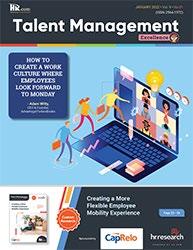
Informing, Educating, Enlightening and Assisting HR professionals in their personal and professional development, the Excellence series offers high-quality content through the publications!



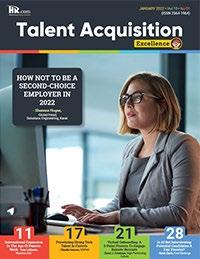
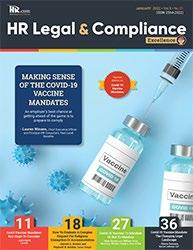





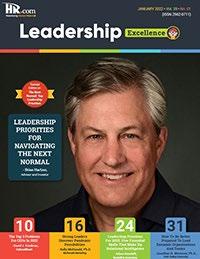
Like to submit an article? Use our online submission form or for more information go to www.hr.com/ExcellencePublications Publications
























 Dr. Beverly Kaye CEO, BevKaye&Co.
Dr. Beverly Kaye CEO, BevKaye&Co.



















 Highlights from Verblio’s annual survey
By Ellie Hearn, Aira
Highlights from Verblio’s annual survey
By Ellie Hearn, Aira




















